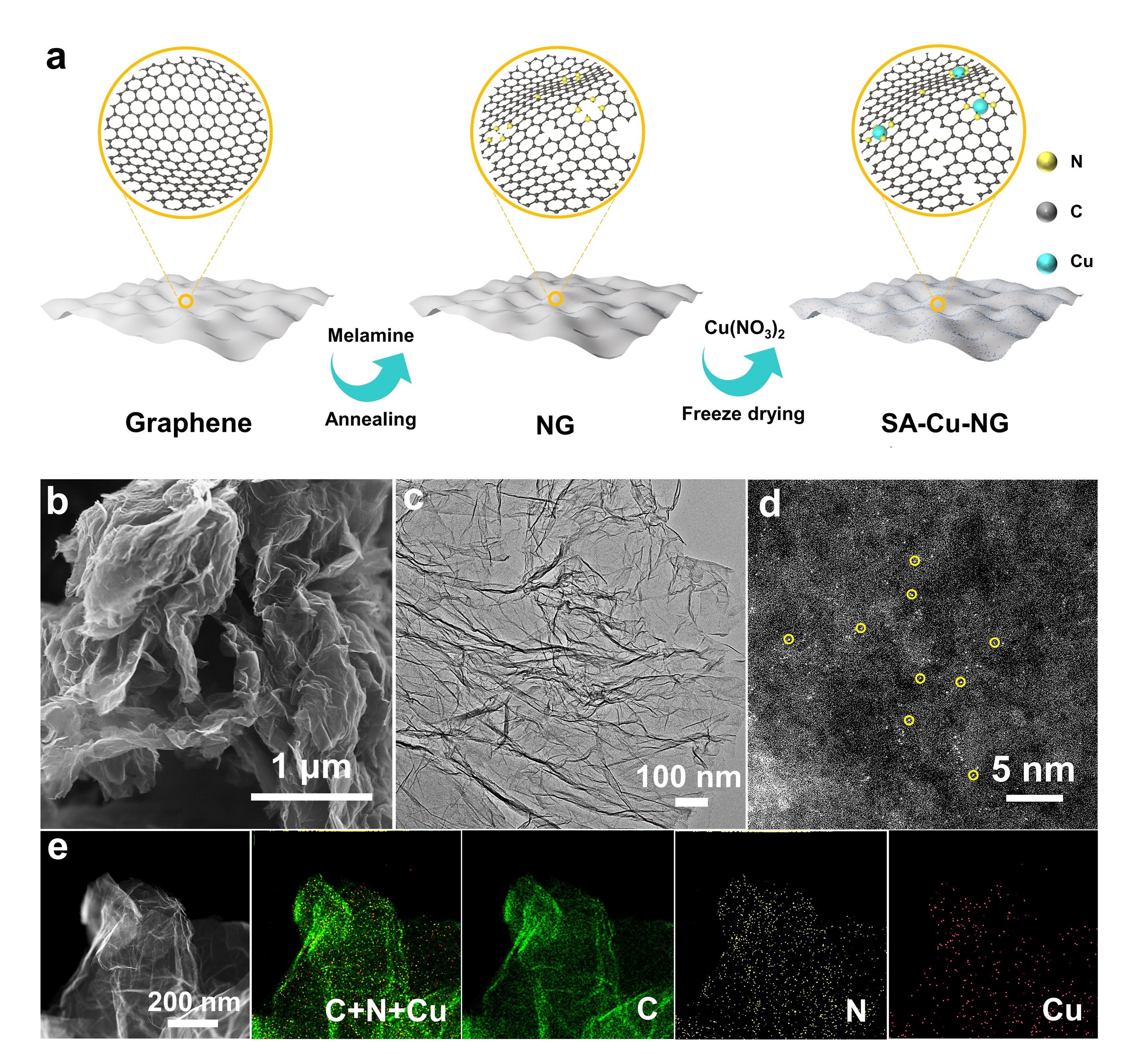Y.Y. Xu, X.J. Li, Y.J. Li, Y. Wang, L. Song, J.C. Ding, X.L. Fan, J.P. He, Tao Wang * and Z.-S. Wu *
Energy Storage Materials, 2024, Accepted.

The slow kinetics of the CO2 reduction and evolution reactions in the Li-CO2 battery result in a high overpotential, low energy efficiency and undesired life. Exploring the durable electrocatalysts with high activity for CO2 reduction and evolution processes in aprotic Li-CO2 batteries is of great significance for CO2 capture and utilization. Herein, single-atom copper uniformly anchored on nitrogen-doped graphene (SA-Cu-NG) was demonstrated as a durable catalyst for the rechargeable Li-CO2 battery. The resulting Li-CO2 battery shows a remarkable specific capacity of 29033 mAh g-1 at 100 mA g-1, an ultra-long life up to 538 cycles (over 2730 h), and a low overpotential of 1.47 V (1000 mA g-1), outperforming the reported Li-CO2 batteries. The X-ray absorption fine structure analysis of SA-Cu-NG unravels that the covalent effect between Cu and N, which exists in the form of Cu-N4 in nitrogen-doped graphene. Further, it is theoretically elucidated that the covalent effect of Cu-N4 leads to the reconfiguration of the charge density difference on nitrogen-doped graphene, thereby improving the adsorption of CO2 and weakening the decomposition barrier of the discharge products on the surface single-atom copper, thus optimizing the nucleation decomposition process. In conclusion, the exceptional performances of Li-CO2 battery are attributed to the superior catalytic activity on Cu-N4 sites and the excellent electronic conductivity of nitrogen-doped graphene, activating the reversible process of discharge product formation and decomposition.
